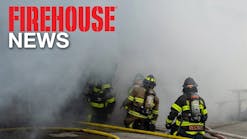Of course, this is not a realistic means of equipment acquisition. With the changes we have seen in 2009 and the way things are shaping up for 2010, you are as likely to receive a thermal imager (or other critical equipment) from the North Pole as you are from other sources. The continuing economic situation and resultant drop in tax revenues have caused a dramatic shift in funding for the U.S. fire service and the traditional methods of alternative funding are suffering as well. This means that many departments are going to be left without a solid, reliable method for providing mission-critical equipment.
Grant Funding
In 2009, we saw a drastic change in many different grant programs. Although grant funding has been available to the fire service in some form or another for quite some time, the events of 9/11 displayed the need for increased funding, caused the creation of new grant programs and cemented higher levels of funding for existing programs. The fire service quickly came to rely on these programs as an essential part of their equipment acquisition plans. The decision to purchase many different types of equipment is often left up to whether or not a grant gets awarded; however, there has been a significant decrease in the funding of grant programs at the federal level and, in many cases, the state level.
The Assistance to Firefighters Grant Program (AFG) was reduced from $565 million to $390 million. This represents a 31% one-year reduction. Created in 2001, the AFG has become akin to a giant equipment lottery whereby a fire department completes an annual application, submits it and waits in line to see if there is enough money to go around. If not, the process simply starts anew the following year. Many fire departments relegate mission-critical equipment such as apparatus, turnout gear and thermal imagers to the "possibility" of grant funding.
The problem with this approach is two-fold: every attempt at funding via this method can cost 12 to 14 months of waiting before ultimately ending in failure and year-to-year program funding is volatile. In this case, when fire department funding in general is falling to unprecedented lows, Congress has seen fit to reduce the funding to this program by more than 30%. The result is, due to budgetary struggles, more departments will apply and fewer dollars are available.
The Commercial Equipment Direct Assistance Program (CEDAP) has historically allowed departments to apply for a pre-selected list of equipment. CEDAP would then select awardees and provide the awarded equipment free-of-charge. Funded at $45 million in 2008, CEDAP was reduced to $17 million for 2009 and is completely unfunded for 2010.
Philanthropic Donation
Another major funding mechanism has been that of the philanthropic donation. Whether this takes the form of monetary donations for charitable purposes or one of the many organizations that provide equipment to first responders, much of this type of giving is driven by economic conditions. Many corporate giving programs are funded based on the revenues or profitability of the business providing the program and when profits and/or revenues fall, so does the funding for charitable giving.
Fundraisers
Even fundraisers, the traditional mainstay of funding for many departments, have produced less this past year than in previous years. There are simply too many worthy causes looking for money. How many donation requests have you seen lately? Veterans organizations, cancer researchers, religious institutions, food pantries, humane societies and others are all feeling the economic pinch and are looking for assistance. As traditional funding sources dry up, Americans are being bombarded as never before by a multitude of deserving organizations, leaving your department's request to fight for attention in a sea of worthy causes.
Conclusion
There are, of course, no easy answers. The economic challenges facing the U.S. fire service are unprecedented in recent history. We have seen the perfect storm of funding issues in 2009. Tax-base erosion, declining revenues, less charitable giving and massive reductions in traditional grant sources leave most departments to fend for themselves. The safety net has been removed. While not in the habit of simply pointing out problems (I much prefer providing solutions), when it comes to the issue of budgetary support of equipment purchases, there are no easy answers.
BRAD HARVEY is the Thermal Imaging Product Manager at Bullard. He is a veteran of public safety as a firefighter, police officer and paramedic and is certified through the Law Enforcement Thermographers' Association (LETA) as a thermal imaging instructor. Harvey has worked as a high-angle rescue instructor and is a certified rescue technician and fire instructor. If you have questions about thermal imaging, you may e-mail him at [email protected].

Brad Harvey
BRAD HARVEY is the Thermal Imaging Product Manager at Bullard. He is a veteran of public safety as a firefighter, police officer and paramedic and is certified through the Law Enforcement Thermographers’ Association (LETA) as a thermal imaging instructor. Harvey has worked as a high-angle rescue instructor and is a certified rescue technician and fire instructor. If you have questions about thermal imaging, you may e-mail him at [email protected].





